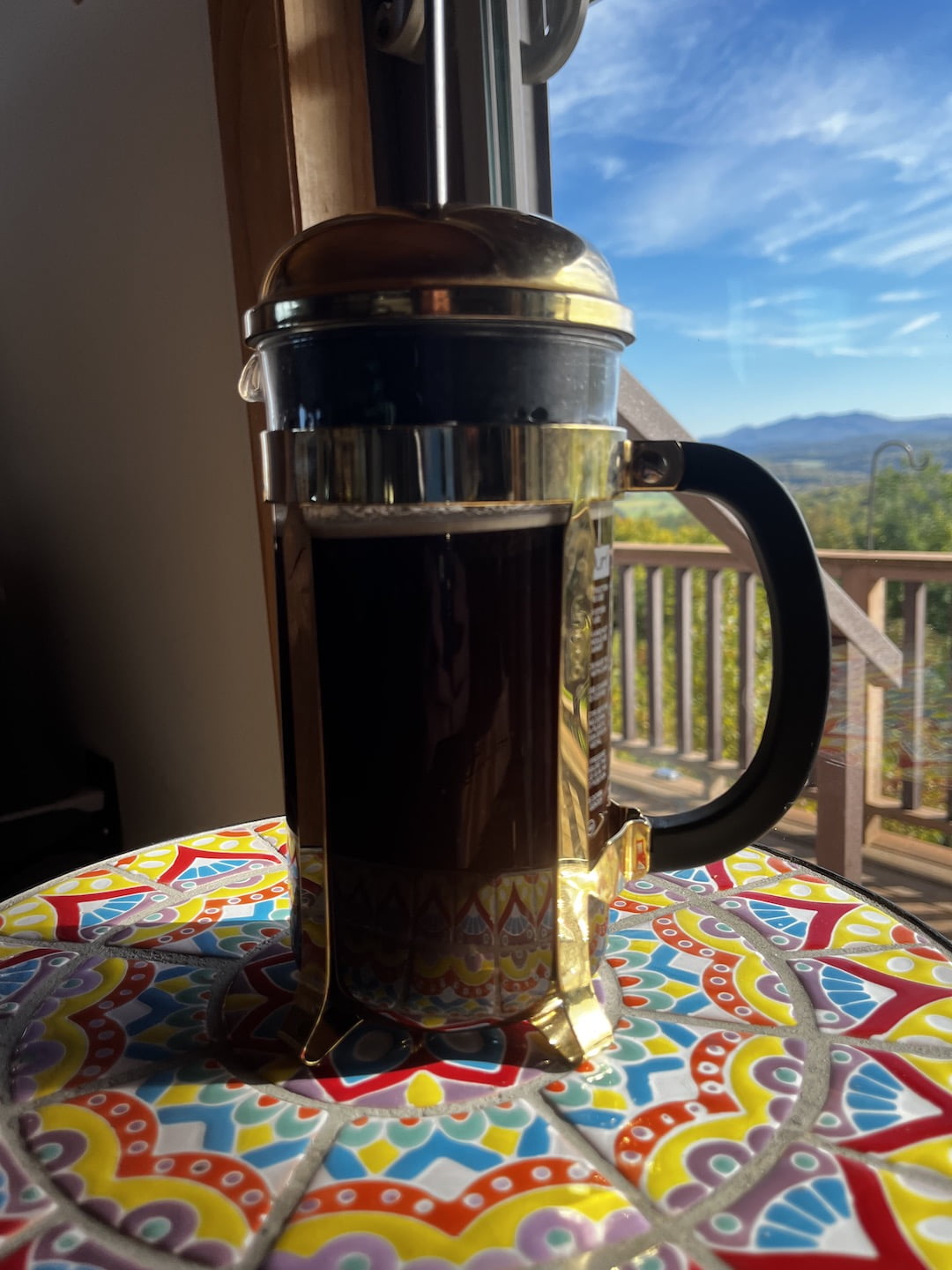Coffee Basics, How To Make Coffee & Brewing At Home
How to Make Perfect French Press Coffee: A Beginner’s Guide
Welcome to Coffee In Touch! If you’re looking for a simple, classic brewing method that delivers a rich, full-bodied cup of coffee, you’ve come to the right place. The French press is a favorite among coffee aficionados for its ability to extract deep flavors and oils that paper filters often trap.
While it looks elegant, the process is incredibly straightforward. In this guide, we’ll walk you through everything you need to know, from the right gear to the perfect grind, and provide a step-by-step recipe for a flawless brew every time.
What You’ll Need
You don’t need a lot of fancy equipment to get started. Here are the essentials:
- A French Press: A quality press will have a sturdy carafe and a fine mesh filter to reduce sediment. We love the Bodum Chambord French Press for its classic design and reliable performance.
- Coarsely Ground Coffee: The grind is crucial! Use a coarse grind, similar to the consistency of breadcrumbs. A fine grind will seep through the filter and result in a muddy cup.
- A Burr Grinder: For the freshest taste, grind your beans right before you brew. A good burr grinder provides a consistent grind size. Check out our guide to the best coffee grinders under $100.
- A Kettle: Any kettle will work, but a gooseneck kettle offers more control when pouring.
- A Scale (Recommended): For consistency, measuring your coffee and water by weight is a game-changer. We recommend the YonCon Kitchen Scale for its 0.1g accuracy.

The Best Coffee for French Press
For this method, medium to dark roast coffees work exceptionally well. Their bold flavor profiles are enhanced by the full-immersion brewing of the French press. Look for beans with tasting notes like chocolate, nuts, or caramel for a rich and satisfying cup.
Step-by-Step French Press Brewing Guide
Our go-to ratio is 1:15, which means 1 gram of coffee for every 15 grams of water. For a standard 34 oz (1 liter) French press, we’ll use 50 grams of coffee and 750 grams of water.
Prep Time: 2 minutes
Brew Time: 4 minutes
Yields: About 3 cups
- Step 1: Heat Your Water
Bring your water to a boil and then let it sit for about 30-60 seconds. The ideal temperature is between 195-205°F (90-96°C). Boiling water can scorch the grounds, leading to a bitter taste. While the water heats, pre-warm your empty French press by rinsing it with hot water. - Step 2: Add Your Coffee
Discard the hot water from your press. Add 50g of coarsely ground coffee to the bottom of the carafe. Give it a gentle shake to level the grounds. - Step 3: Bloom the Coffee (The Most Important Step!)
Set the press on your scale and tare it to zero. Start a timer and pour about 100g of hot water over the grounds, ensuring they are all saturated. This is called “the bloom.” You’ll see the coffee bubble and expand as it releases CO₂. Let it sit for 30 seconds. This step is critical for unlocking the coffee’s full flavor potential. - Step 4: Add Remaining Water
After the bloom, gently pour the remaining 650g of water over the grounds. Place the lid on top with the plunger pulled all the way up to trap the heat. - Step 5: Steep for 4 Minutes
Let the coffee steep for exactly 4 minutes. For a stronger brew, you can go to 5 minutes, but steeping for too long will lead to over-extraction and bitterness. - Step 6: Press Slowly
After 4 minutes, it’s time to press. Firmly and slowly press the plunger all the way down. This should take about 15-20 seconds. Pressing too fast can agitate the grounds and force fine particles through the filter. - Step 7: Serve Immediately
Pour the coffee into your mugs right away. Do not let the coffee sit in the French press, as it will continue to extract from the grounds at the bottom, becoming bitter over time.
Enjoy your perfect cup!
Troubleshooting Common Issues
- My coffee is too weak: Use a finer grind or increase your coffee-to-water ratio slightly.
- My coffee is too bitter: You may be over-extracting. Use a coarser grind or shorten your steep time to 3:30.
- There’s sludge at the bottom of my cup: Your grind is too fine. Use a consistent, coarse grind from a quality burr grinder.